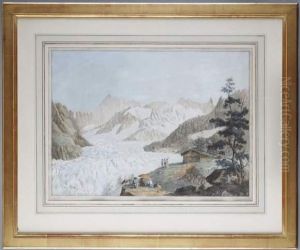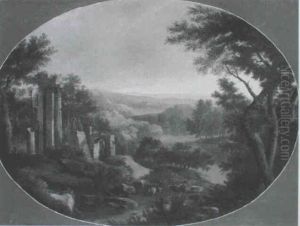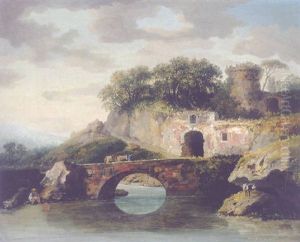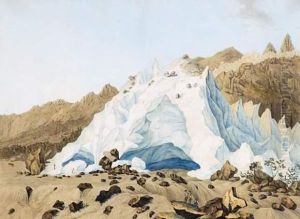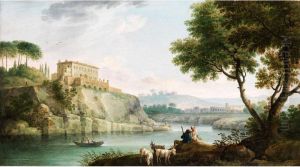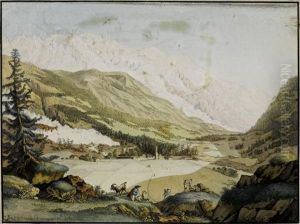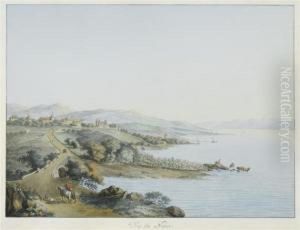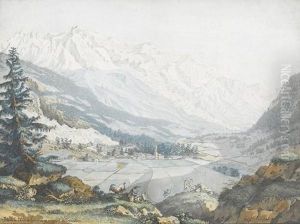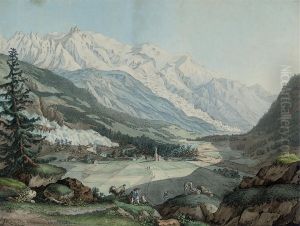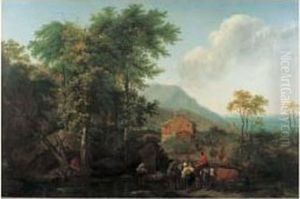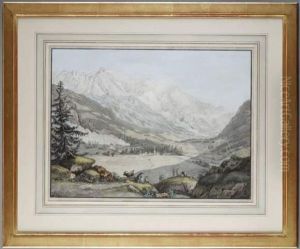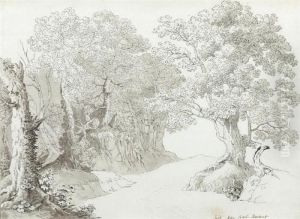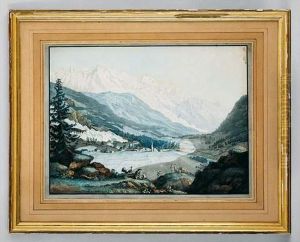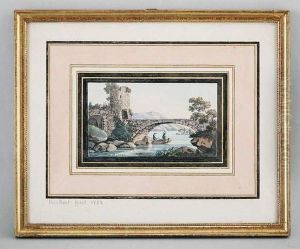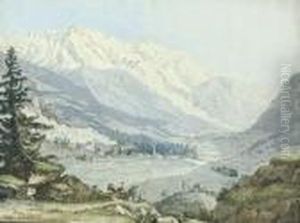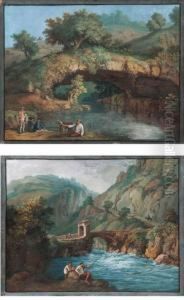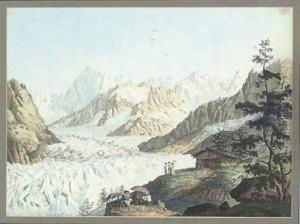Carl Ludwig Hackert Paintings
Carl Ludwig Hackert, born in 1740 in Prenzlau, Brandenburg, Germany, was a lesser-known but influential figure in the 18th-century European art world. He was part of the Hackert family, which included his more famous brother, Jakob Philipp Hackert, who was renowned for his landscape paintings. Despite the overshadowing fame of his brother, Carl Ludwig carved out his own niche in the art world, primarily focusing on engraving and painting.
Carl Ludwig's early life was marked by his move to Berlin, where he initially trained and worked. His artistic journey was significantly influenced by his brother Jakob Philipp, with whom he maintained a close relationship throughout his life. This connection provided him opportunities to be part of the vibrant art scenes in places like Italy, which was a central hub for artists seeking inspiration during that period.
In Italy, Carl Ludwig Hackert's work began to flourish. He embraced the Italian landscape and culture, which significantly influenced his artistic output. His engravings and paintings from this period show a keen observation of nature and a delicate handling of scenes, which were characteristic of the era's landscape art. He became known for his attention to detail and his ability to capture the essence of the Italian countryside.
Despite his contributions to the art world, Carl Ludwig Hackert's life and career were cut short when he died in 1796, at the relatively young age of 56. Although he did not achieve the same level of fame as his brother, his works remain a testament to his skill and dedication to his craft. Today, Carl Ludwig Hackert is remembered for his contributions to landscape painting and engraving, and his works are appreciated for their historical value and artistic merit.
Overall, Carl Ludwig Hackert's legacy is that of a talented artist who, despite living in the shadow of his more famous sibling, managed to make a lasting impact on the art world through his dedication to capturing the beauty of the natural world. His works continue to be studied and admired for their contribution to the development of landscape art during the 18th century.
